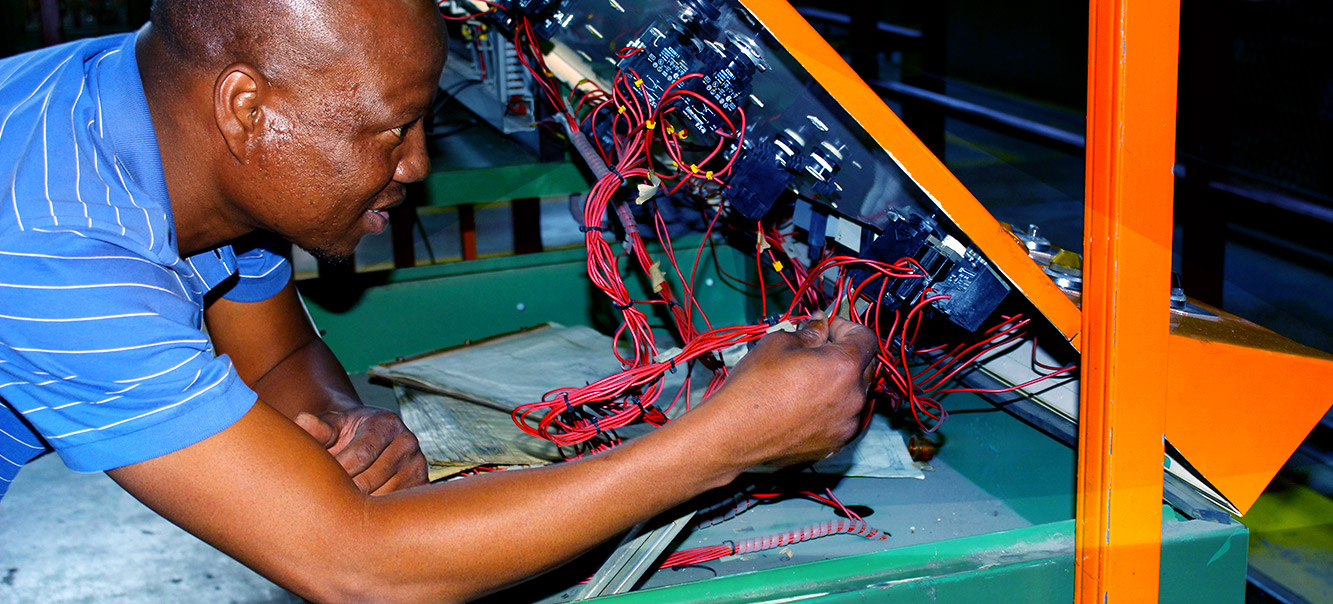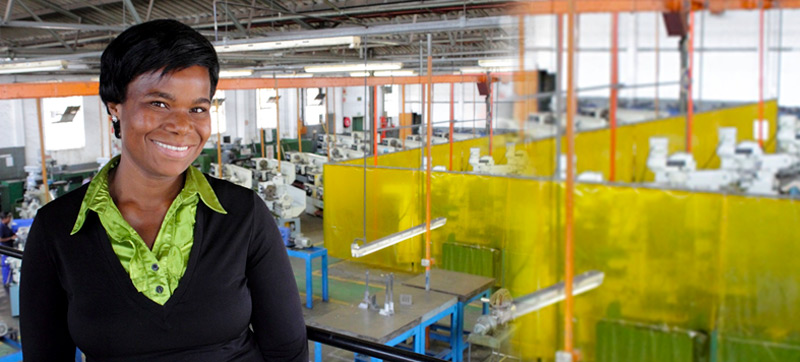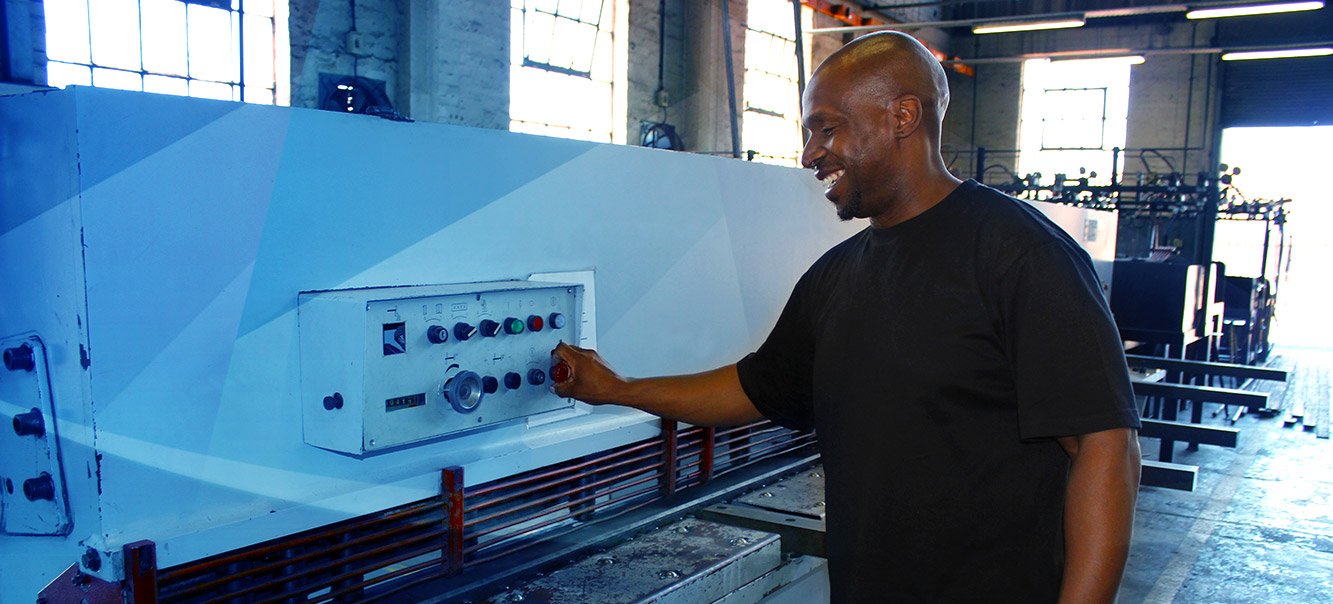THE BUSINESS CASE FOR TRAINING ARTISANS IN A DEPRESSED ECONOMY
Profits are down, unemployment is up and costs are rising. How do you, as a Director or
a Senior Manager, justify and make the case that efforts to sustain or increase your
company’s training efforts in this environment? To add injury to insult, Artisan training is
expensive. In some cases, training an artisan over a four-year period is more expensive
than fees would be for a university degree.
Is a business case even possible for the training of artisans and apprentices in a
stagnant economy, such as South Africa’s in 2019?
SEIFSA believes that the business case exists.
In the book Perfecting Your Pitch, author Ronald M. Shapiro says: “That gap – between
preparing and presenting, between thinking and speaking – is the Bermuda Triangle of
human interaction. And, scripting, I believe, is the best tool to bridge it,”
To prepare HR and Skills Development Practitioners to make the business case
effectively, SEIFSA suggests using the F.I.S.E. framework to pitch the business case for
continuing a Skills Development regime within their companies.
F.I.S.E. is a four-pronged approach and stands for Focus, Incentives, Stewardship and
Expertise.
The objective here is to Aim high with reason, and have a good rationale.
Most companies today should have a continuous improvement programme at the heart
of their operations. This should be especially true in the metals and engineering
industries in South Africa. If continuous improvement is not part of the organisational
and management culture, then long-term success becomes tenuous at best. Training is,
of course, part of this process.
Fostering an “innovative learning culture” and developing life-long learning is going
beyond training people how to do their jobs, but to coach and mentor, which helps in
sustaining the momentum of benefits of training.
The message must be that: training cannot become an ‘ad-hoc exercise that is easily
cut in bad times.
Training must be approached as business-like operations and demonstrate a real
return. The outcome must be that staff must be motivated and have deep-seated loyalty
to the company – and that is reflected in performance.
Quality is the ultimate benefit.
INCENTIVES
You have help. The South African government has incentives in place to help
companies keep training in the bad times. These incentives are implemented through
merSETA, and include both Mandatory Grants and Discretionary Grants.
It is likely that you will get most, if not all, your training spend back.
Therefore, it is incumbent on Human Resource and Skills Development Practitioners to
familiarize themselves with – and commit to memory – the working of these grant
programmes.
The purpose of Mandatory Grants is to provide an incentive to employers to plan and
implement training for their employees and provide data to the SETA on their workforce
and skills needs. Data must be accurate and well prepared in order for the SETA to use
the information to establish skills needs in the sector for inclusion in the Sector Skills
Plans. All training, whether included into the previous financial year’s Workplace Skills
Pan or not, must be reported on in the Annual Training Report.
SEIFSA, through its Human Capital and Skills Development Division can easily support
companies through training and consulting in this area.
Requirements for the approval of Mandatory Grants follow below:
- The merSETA must allocate Mandatory Grants to merSETA’s levy-paying
employers who submitted their application by 30 April of the financial year and
met the criteria;
- Submitted and implemented a Workplace Skills Plan (WSP) and Annual Training
Report (ATR), PIVOTAL Plan (PP), Non-PIVOTAL Plan (NPP) and a PIVOTAL
Report (PR), where applicable, in the required format;
- Registered for the first time in terms of the Skills Development Levies Act and
submitted an application for a mandatory grant within six months of registration;
- Levy payments are up-to-date;
- Submitted a WSP in the previous financial year;
- Employers who have recognition agreements with a trade union or unions must
provide evidence in the form of minimum of two meeting minutes that the WSPs
and ATRs have been subject to consultation with the recognized trade unions
and the WSPs and ATRs must be signed off by the labour representative
appointed by the recognized trade union, unless an explanation could be
provided.
- The Mandatory Grant application, consisting of the WSP, PP, NPP, ATR and PR
must be electronically signed off by the appointed labour representative where a
recognition agreement exists between the employer and Iabour, irrespective of
the size of the company.
The second intervention is Discretionary Grants. The purpose of Giscretionary Grants is
to encourage stakeholders to contribute towards the achievement and objectives of the
NSDS Ill, the merSETA’s Sector Skills Plan (SSP), Strategic Plan (SP) and Annual
Performance Plan (APP). Discretionary Grants are allocated at the sole discretion of the
merSETA’s Accounting Authority to achieve its objectives in relation to the development
of the sector.
- A maximum of 7.5% of the allocated discretionary grants may be utilized by the
merSETA for administrative costs for the delivery and implementation of the
merSETA’s Discretionary Grant initiatives.
- Discretionary Grants could be paid to legal entities, inclusive ofpublic education
and training institutions and public Community Education and Training Centres,
as defined in the definitions in Section 2 of the Policy;
- An employer or enterprise within the jurisdiction of merSETA, including an
employer or enterprise not required to pay a skills development levy in terms of
the Skills Development Levies Act, and
- Non-profit Organizations (inclusive of NGOs), and co-operatives that implements
programmes within the merSETA sector that meet allocation criteria. and
STEWARDSHIP
Stewardship is a social goal, and should be a goal for all companies within the metals
and engineering and manufacturing industries.
Answer this question conclusively, and confidently:
Do socially responsible activities lower a company’s
economic performance?
Bolster your answer with examples of success. For example, you could research the
outcomes of SAB Ltd’s widely acclaimed Owner-Driver Programme as a social
responsible initiative that adds to the bottom line.
The majority of studies in this area show a positive relationship between social
responsibility and economic performance. The logic underlying this positive relationship
is that social involvement provides a number of benefits to a company that more than
offset their costs. These include a positive consumer image, a more dedicated and
motivated workforce, and less interference from regulators/government.
In fact, building a successful businesses is by definition being socially responsible. The
benefits of this action alone cannot be divorced from society’s challenges as a whole:
- South Africa needs successful businesses to create jobs;
- South Africans need skills to become better at their jobs; and
- The manufacturing industry needs artisans and apprenticeships.
Today companies and managers, especially in the South African context, are
responsible to any individual or group that is affected by the organisation’s decisions
and policies. These stakeholders are any constituency in an organisation’s environment:
Government agencies, unions, employees, customers, suppliers, host communities and
interest groups.
EXPERTISE
SEIFSA exists to provide the best advice and services to the industry it serves,
specifically the metals and engineering industry as part of the broader manufacturing
sector. This is core to why SEIFSA made the decision to develop and establish the
SEIFSA Training Centre (STC).
Located near the heart of Johannesburg’s industrialized belt, the Centre has been
recognised as a “Centre of Excellence” by the Department of Higher Education and
Training (DHET), the Quality Council for Trades and Occupations (QCTO) and
merSETA. SEIFSA is proud that the STC has received accreditation by the
Manufacturing, Engineering and Related Services Sector Education and Training
Authority (merSETA), the Chemical Industries Sector Education Training Authority
(CHIETA), the Energy and Water Sector Education Training Authority (EWSETA) and
the QCTO for Training and Trade testing.
The STC is primed to offer companies and their employees opportunities for career path
development, mentorship, coaching and trade test proficiency. The focus on the holistic
aspects give students the opportunities to develop as people, not only to be better
employees. Our trainees are prepared to meet the demands of the industry, including an
understanding of productivity, problem solving and the imperative of safety in the
workplace.
The STC will be your partner in developing your Artisan Development Programme and
help with:
- Recruitment and selection of candidates;
- Indenture apprentices on training contracts;
- Institutional training of 26 weeks at the SEIFSA Training Centre according to
SETA qualification requirements;
- Placement of candidates for practical training at employers; and
- Final training and trade testing at the SEIFSA Training Centre.
The staff and the SEIFSA Training Centre and the Human Capital and Skills
Development Division at SEIFSA will ensure that you understand and apply the
directives of merSETA’s grant Programme and safeguard the return on investment for
the following areas:
- Recruitment and selection of candidates;
- Institutional and final training costs;
- A monthly stipend for candidates for the duration of training programme;
- A toolkit and PPE needed during formal training phases;
- Monitoring of candidates’ progress at employer sites; and
- Administration and reporting of candidates’ progress.
The SEIFSA team will show you step by step how to sustain your training programme –
even in the current depressed economic environment.










